As humans, we are hardwired with instinctual behaviour. This allows us to appreciate the beauty of nature. There is a Biophilia hypothesis that describes the idea that humans possess an innate tendency to seek connections with nature and other forms of life. It also describes the “passionate love of life and of all that is alive”. Humans are visual beings, and the natural world consists of a rich diversity of colours, shapes, and patterns.
Being indoors for the majority of our day can play havoc on our mental and physical health. Bringing plants into our work environment is a smart way to enjoy the many benefits they provide. Plants provide oxygen, absorb carbon dioxide, and are very good at removing harmful indoor toxins known as Volatile Organic Compounds (VOC’s). These toxins are found in everyday items such as paints, carpets, furniture, household cleaners, etc. Over time, these toxins are harmful to our health, so it makes sense to ask Mother Nature for a lending hand.
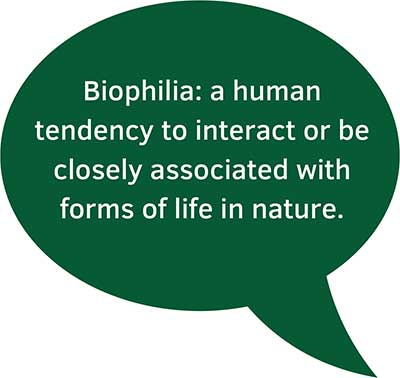
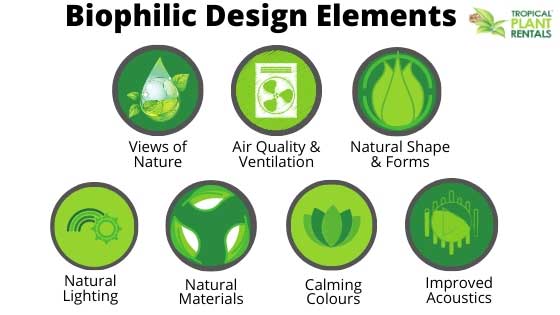
Biophilic Design is an architectural concept used to incorporate nature and natural elements into our built environment. This concept helps to connect humans and nature. Biophilic Design is derived from the term Biophilia, which means the love of nature. It describes the innate tendency humans feel to seek connections with other life forms and nature as a whole.
Biophilic Design concepts include natural lighting, natural products, outside views, and views of botanica. It’s a natural instinct of humans to want to feel connected with the natural environment. Nature provides mental and physical benefits.
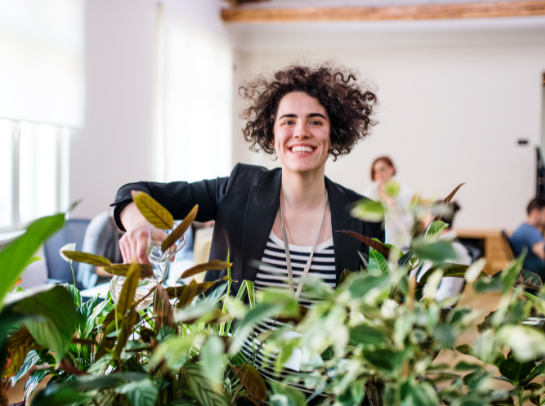
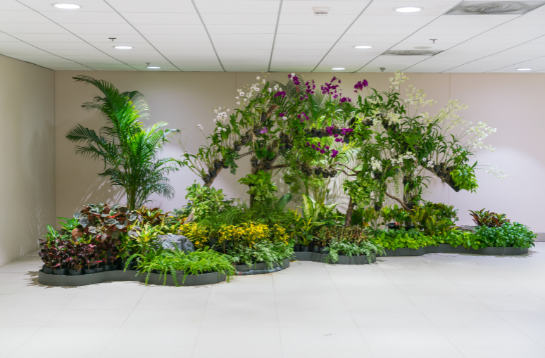
An office with a biophilic presence using indoor plants creates a more welcoming space. Considering we spend a great deal of our time in the indoor built environment, it makes perfect sense to bring nature indoors to enhance our workspaces.
Healthy plants also clean the indoor office air by absorbing harmful toxins and producing oxygen, promoting overall health benefits for your workplace.
Designers and architects have created many ways to incorporate biophilic design into a building. Ideally, if architects, designers and a qualified indoor plant / green wall specialist could collaborate before the design process, the result would be a building that provides many health benefits for all that occupy that space.
The good news is that biophilic design can also be incorporated into an already built environment:
Some of the environmental elements for a biophilic design include:
We’re not all lucky enough to enjoy a stunning window view of a sweeping landscape, beautiful lake, rugged mountain, or golden, sandy beach. However, there are several ways to introduce mother nature with beautiful, healthy indoor plants. With so many options available, there’s always something to suit most environments.
These include:
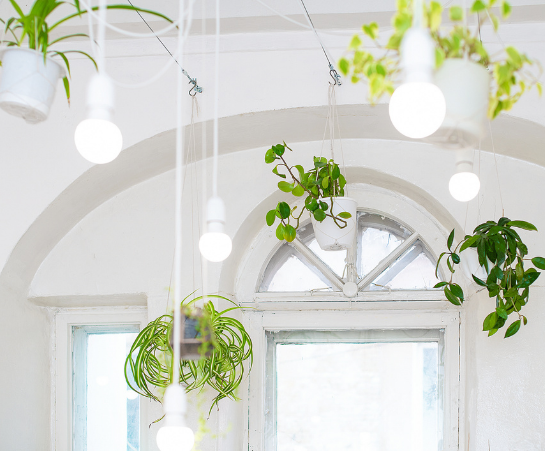
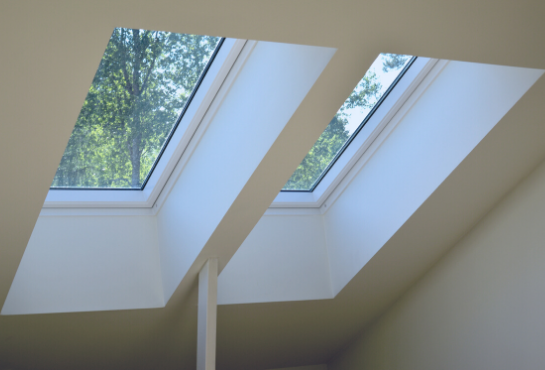
The working environment can often contain many harmful toxins that emit from photocopiers, printers, furniture, carpets, paints etc. These include Xylene, Benzene, and Formaldehyde.
Biophilic Design pays particular attention to fresh air and natural ventilation.
Humans thrive on natural lighting and the presence of windows or skylights can allow for natural light to enter the building. Nowadays, many built environments can lack natural lighting.
When stunning window views are not accessible, other elements that resemble natural earthy forms can significantly contribute to Biophilic Design. For example:
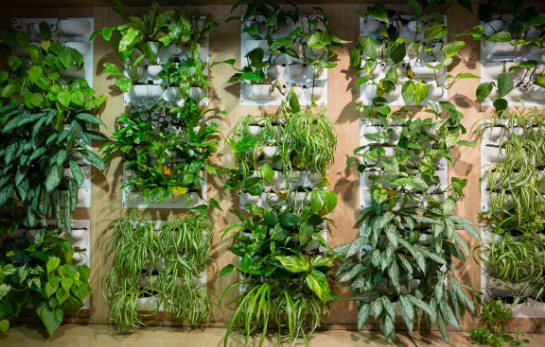
Using materials obtained from nature where possible (eg from timber or stone) can help to reduce the harmful toxins founds in Volatile Organic Compounds (VOC)s from man-made products (laminates and most carpets).
Colour schemes can play an important role in our mood. Using calming colours that represent nature can contribute to a calming environment.
The acoustic benefits of having several indoor plants spread evenly throughout a space has been well documented to reduce noise levels inside a building. A stunning green wall will also offer amazing acoustic benefits. Often a work environment can be disruptive and non-productive due to many office areas being open plan layout. Noise can be improved through the process of deflecting sound (when sound waves strike a flexible surface such as plant foliage, the surface with vibrate and the waves change to another energy form or diffusing sound).

Biophilic design creates a happy, healthy workplace. The importance of Biophilic Design in the workplace has become an important aspect in both the design and as-built environment. This is an ever-evolving concept. The built environment can play havoc with our health and wellbeing. An environment devoid of nature can create detrimental health effects, which is why building a working environment as close to nature as possible is the key. The term Biophilia refers to the human desire to connect with nature and all things living. This desire originates in our long history as species that evolved in a natural environment, not man-made.
Considering many of us spend more than 90% of our time indoors, we have less time to connect with nature. That being said, it’s time to bring some of what mother nature has provided for us, into our indoor spaces.
The obvious solution to introduce biophilic design into the workplace is through nature. Introducing indoor office plants is an ideal way to do that. Research has shown us that the presence of indoor plants can provide many benefits to our health. They include extensive physical, mental, and psychological benefits.
For example:
Although indoor plants play a major role in Biophilic Design, there are many other elements that should be considered and this concept emphasises the overall setting of an indoor environment.
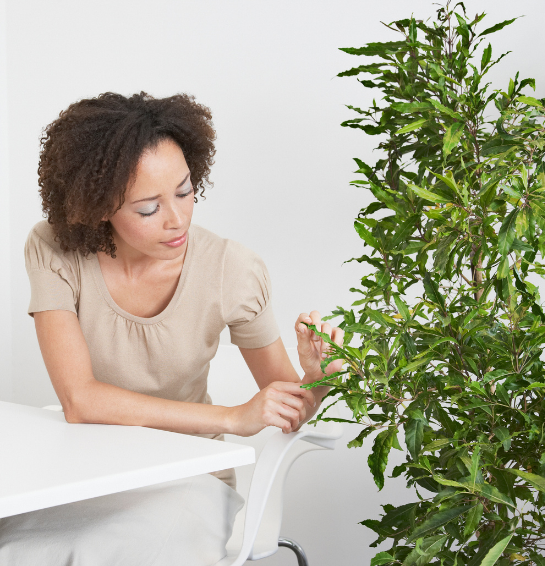
One of the best ways to incorporate biophilic design in the workplace is through hiring indoor plants. This removes the time, stress and money involved with buying plants new. At Tropical Plant Rentals, we are experts in hiring out indoor plants for the workplace. Get in touch with our friendly team to find out how we can help your office come to life!